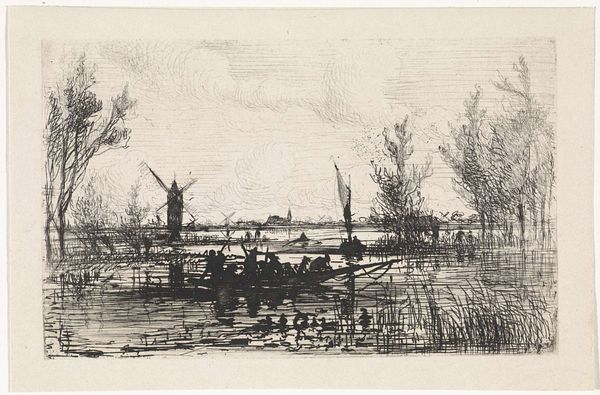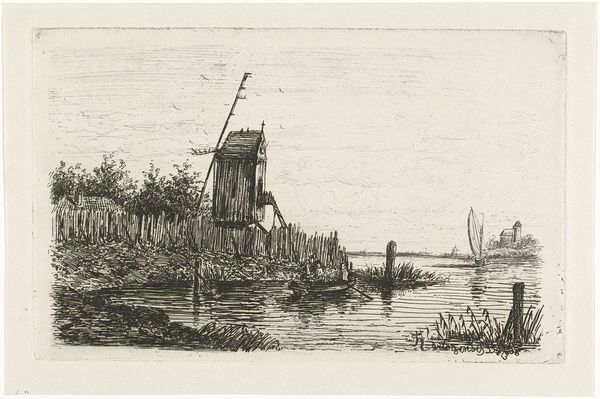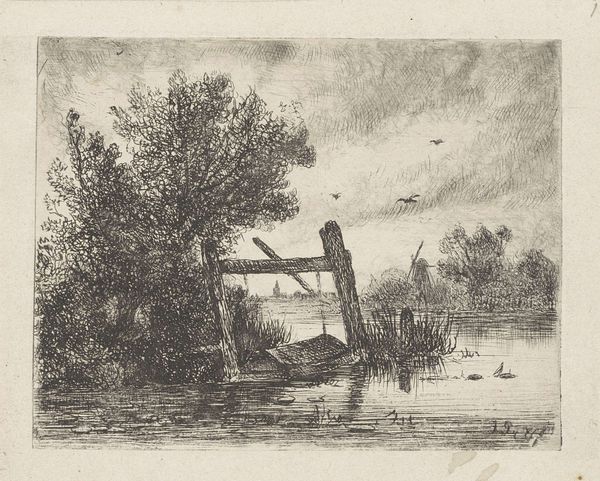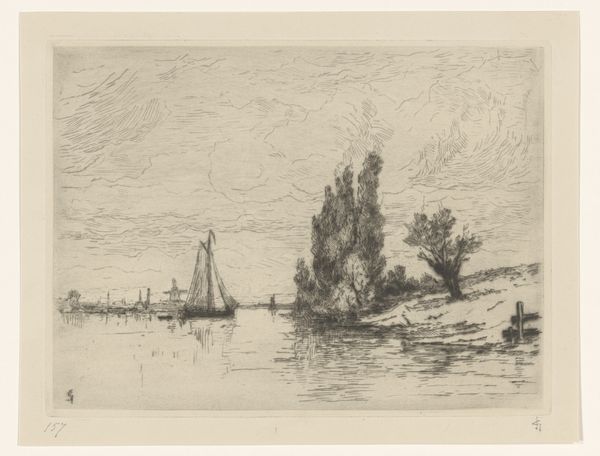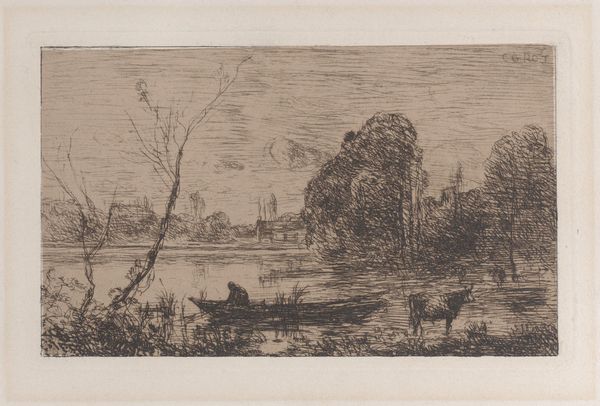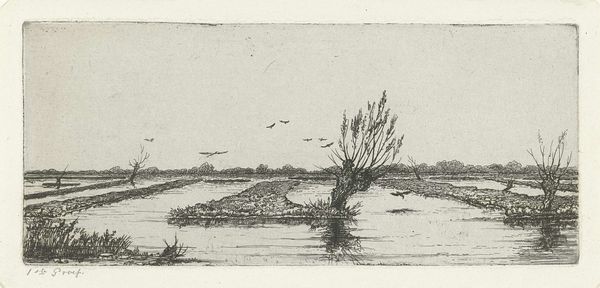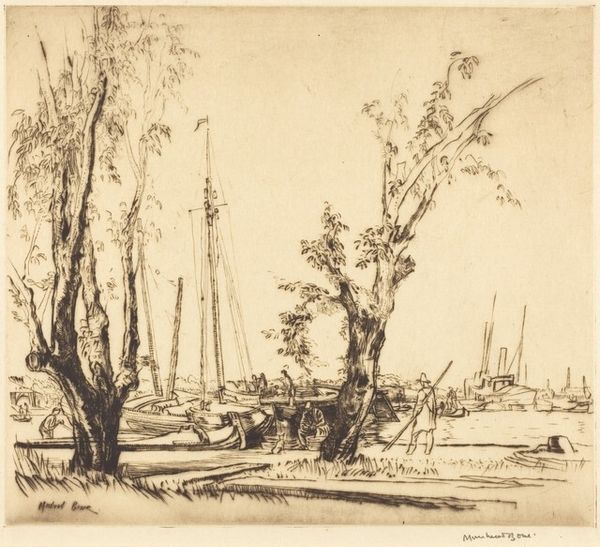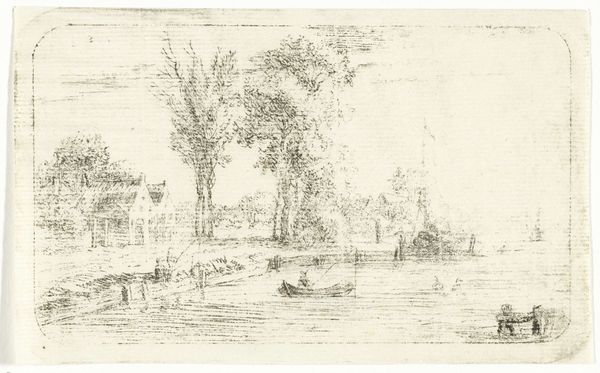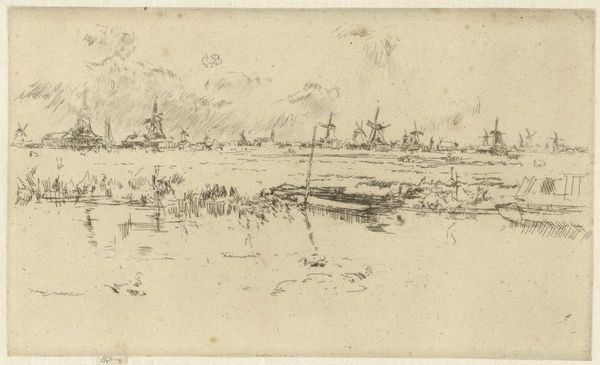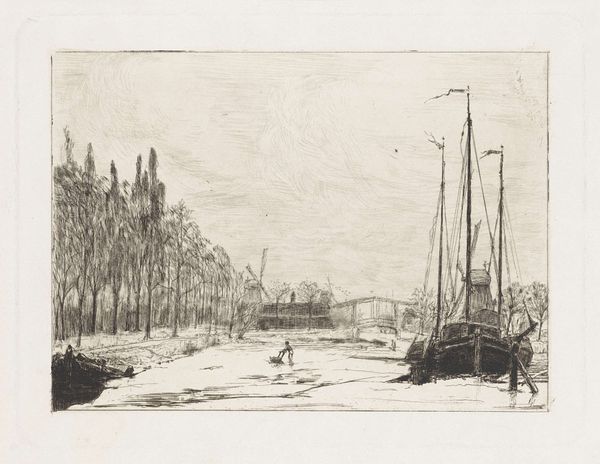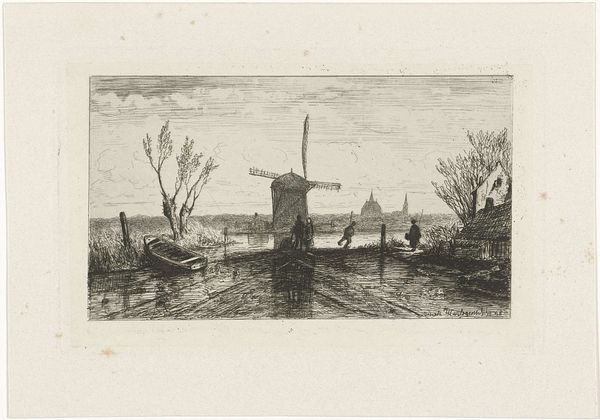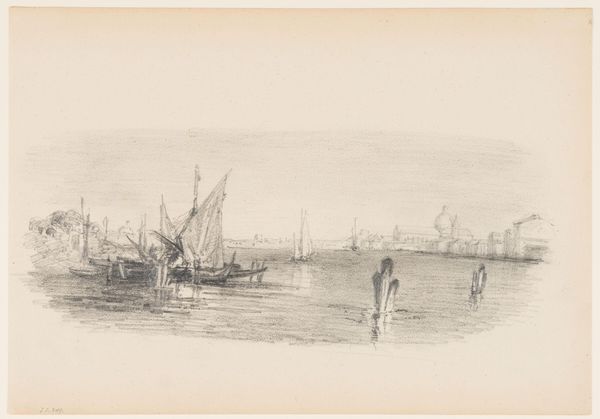
drawing, print, etching, ink
#
drawing
#
dutch-golden-age
# print
#
etching
#
landscape
#
etching
#
form
#
ink
#
geometric
#
line
#
realism
Dimensions: height 81 mm, width 130 mm
Copyright: Rijks Museum: Open Domain
This landscape was etched by Johannes Tavenraat, a Dutch artist who lived in the 19th century. Etching is an printmaking process where a metal plate, usually copper or zinc, is coated with a waxy, acid-resistant substance. The artist then scratches an image into the wax, exposing the metal. When the plate is dipped in acid, the exposed lines are eaten away, creating recessed lines. The plate is then inked, and the surface wiped clean, leaving ink only in the etched lines. When paper is pressed against the plate, the image is transferred, resulting in a print with fine, detailed lines, as you can see here. This technique allowed artists to reproduce their work, making it more accessible and contributing to the growth of a market for art. The etching process itself requires skill and precision, but also enables a certain efficiency, making art production more compatible with emerging industrial models. In the 1800s, artists like Tavenraat found new ways of engaging with both craft and commerce.
Comments
No comments
Be the first to comment and join the conversation on the ultimate creative platform.
